The Norwegian fashion designer talks tailoring, femininity and Alexandra Ocasio-Cortez’s capes.
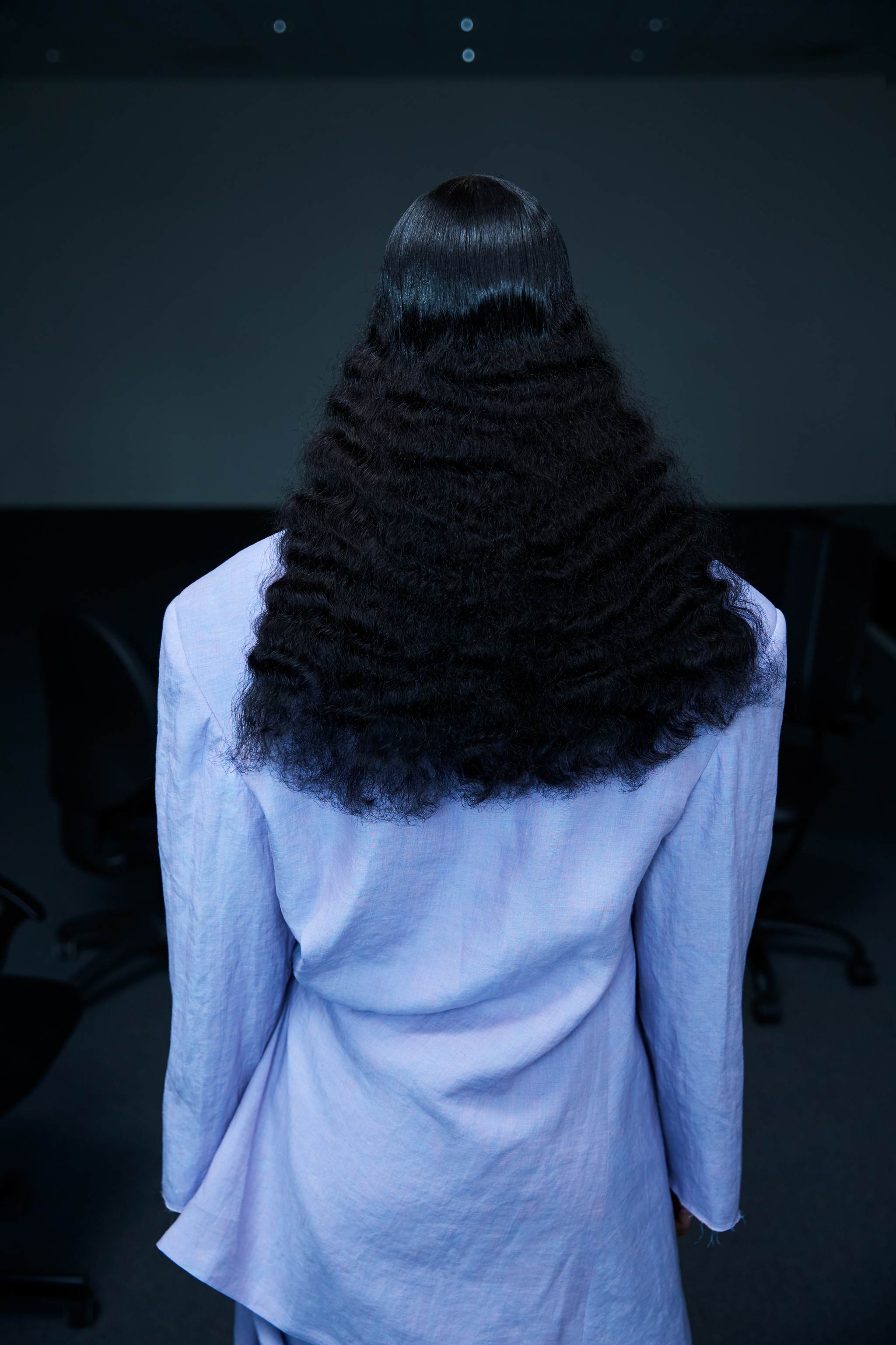
Anne Karine Thorbjørnsen discovered her love for tailoring through its counterpart, with ultra-feminine drapery being her pièce de résistance. She merges the two like no one else—and she has done so ever since she graduated from Central Saint Martins. The Oslo-based designer specialises in disrupting tailoring and femininity, bringing them together as a joint force of expression through meticulously gathered fabrics and techniques.
Both in the news image and fashion industry, the suit and the general notions of tailoring have dominated our runways and news consumption for the past year, and as we’re closing in on 2019, journalist Madeleine Holth sat down with the Anne Karine Thorbjørnsen to discuss Roger Stone’s suits, Alexandra Ocasio-Cortez’ capes, the pinstripe, fashion as a language, codes of dress and how the wedding dress carries the same strict values as a tailored blazer.
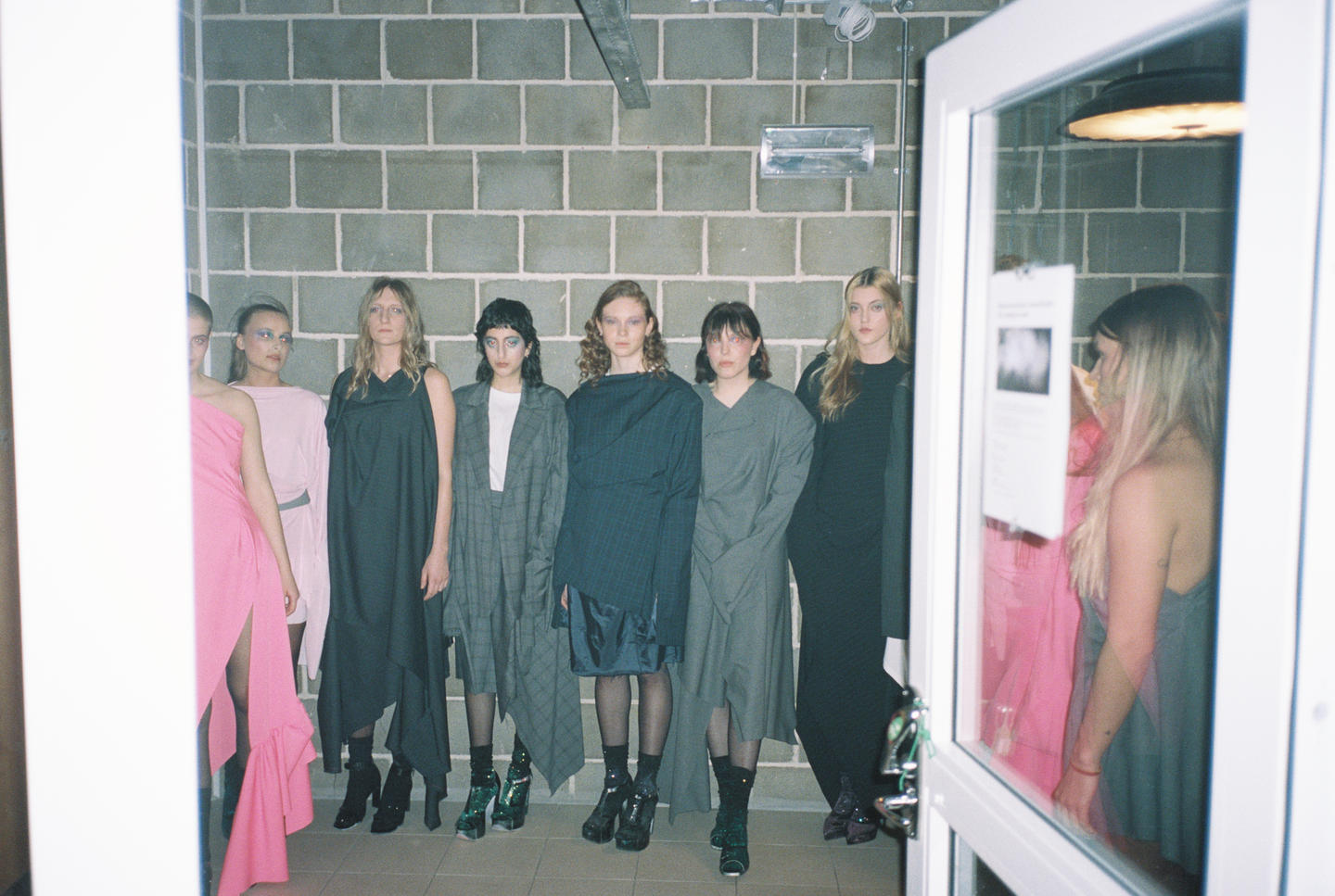
I believe it was just over five years ago when I first discovered your brand and what initially grabbed my attention was your tailoring, because at the time I hadn’t seen anything like it before. Can you maybe tell me a little bit about why you started working with the notions of tailoring?
It stems from working with drapery, which I started messing about with during my Masters degree. That’s when I started diving into the world of drapery, which is traditionally heavily associated with notions of the feminine and the soft. I wanted to give drapery a new meaning and put it into new contexts.
But you don’t see drapery in classic tailoring, do you? Classic tailoring is so strict?
It’s two opposites, really. In drapery, you need the body to give shape and form to the folds, whereas the suit is constructed, it’s built from the inside out, so it doesn’t necessarily need the body. It’s giving you a structured shape. I enjoy working with opposites, merging the two crafts, using its obvious symbolic values and playing with them to change their value and to fuck it up.
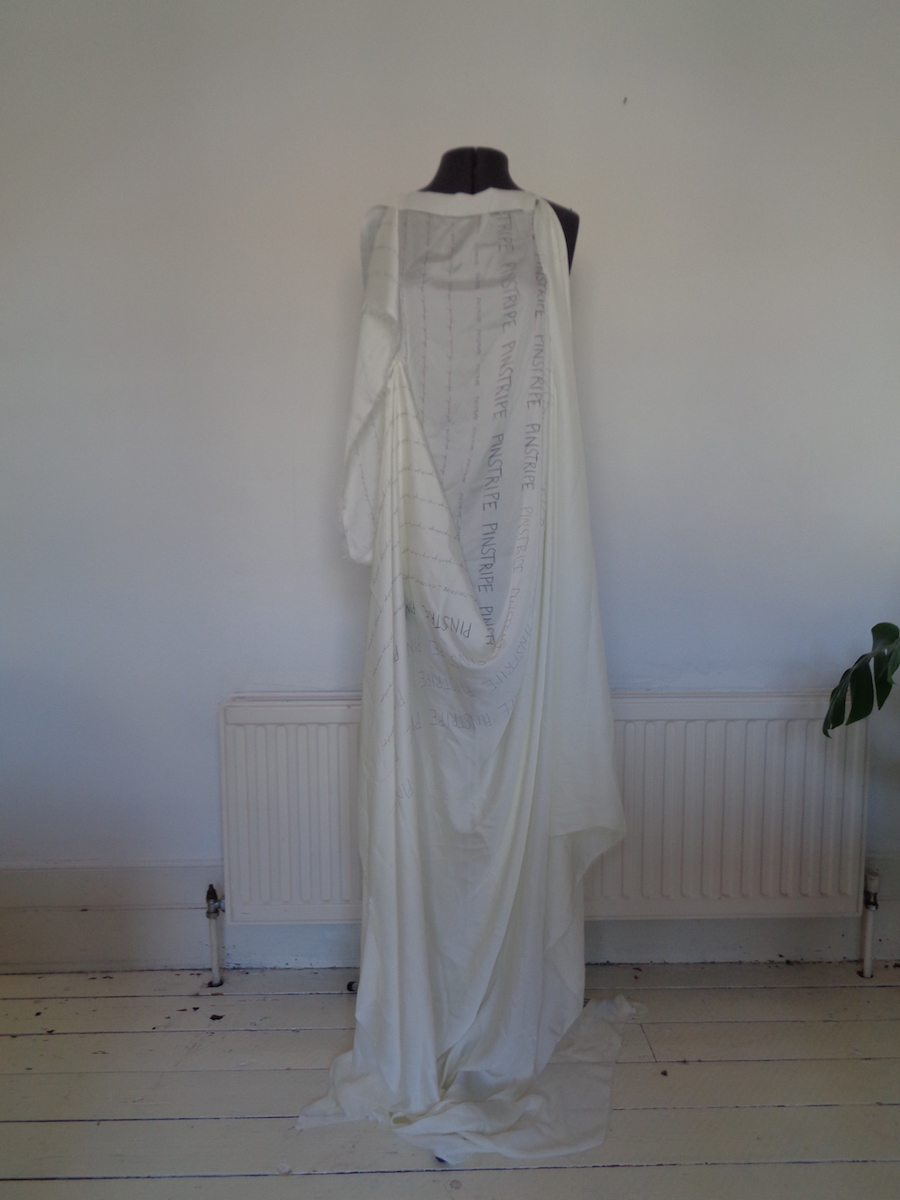
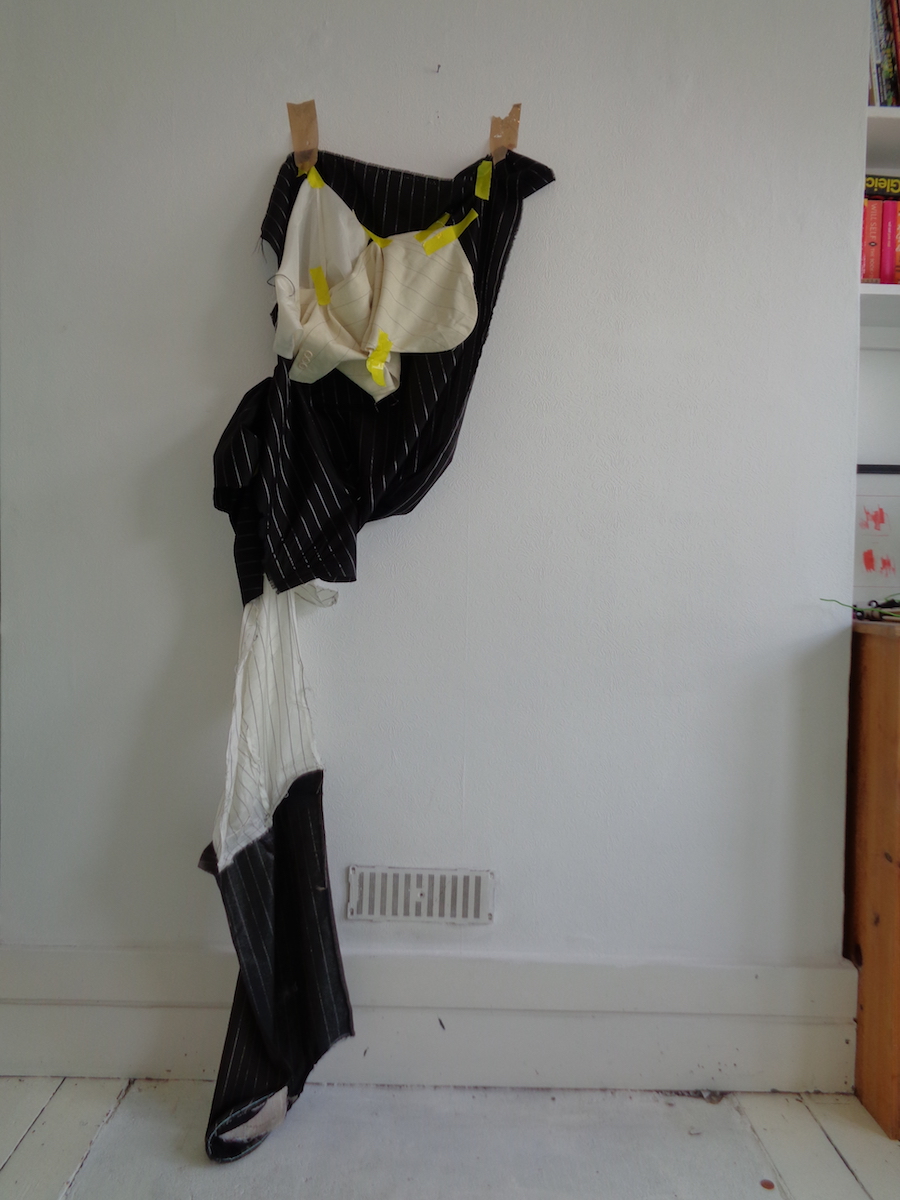
What was the piece of clothing that stood out to you as something so incredibly strict that you had to disrupt it?
I want to say that it’s not necessarily just a garment itself, but if it has to be a garment it would be the suit jacket. However, it might be more about the fabric, the material in itself, the wool suiting, its recognizable patterns and designs, such as the pinstripe; it inherits strict traditional values. Just by looking at the fabric it gives me very specific connotations to a certain time, or class, or style. The pinstripe to me inherits strong notions of rogue masculine power, greedy bankers, mobster-like-ish.
When I think about the suit, in its original state and form, it divides a lot of people. And just walking in the big city, you can sense the class divide. That’s why I’m so interested in this idea of disrupting it. You can see it happening in media, especially in 2019. However, your creations don’t give me the sense of a class divide, how did you eliminate those ideas?
I like to think that the garments I create are like tools; tools to lift you, for you to feel better, and ultimately behave better. The feminine has connotations to soft, the masculine to hard. “Feminine” does not, of course, equate to weakness, but I still think there are traces of these old codes left within society, which I enjoy to disrupt. The suit has predominantly belonged to the male, and it speaks of power, strength and an idea of success, and by draping the suit and adding the softness of folds, I feel I somehow reclaim the power to softness and femininity.
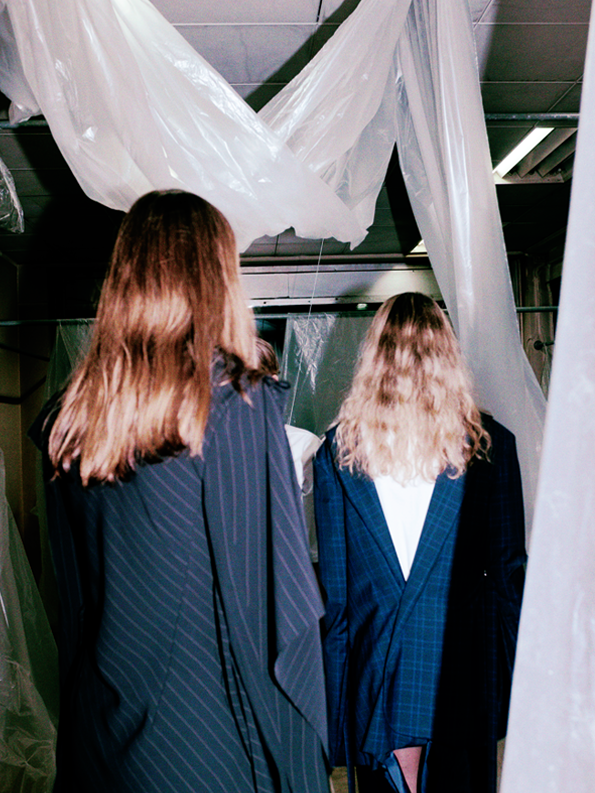
I recently did a little research in the commercial fashion press on the term “power dressing”, I absolutely hate that word. But what surprised me was that power dressing is women adopting menswear clothes into their own wardrobe. I’m just very curious from your standpoint, what is feminine power dressing? Does it have to be masculine driven?
No, definitely not, but I use masculine codes as a tool of transition of values. I use these traditional ideas whilst disrupting them, to convey new meaning, to launch a different way of seeing something or thinking you have to guide thoughts, by combining the familiar with the new, to gain a following and understanding.
The year is coming to a close, I feel like 2019 has been the year where men in suits have dominated all the news we have received. Especially looking at someone like Roger Stone, former advisor to the President of the United States of America. Stone wears the most absurd and offensive suits you can think of, wide lapels with wider pinstripes, and then you have someone on the feminine side, like Alexandra Ocasio-Cortez, who wears white-on-white suits with a red lip to the house of representatives. So, the suit has been in the news image without a doubt, but then again, it also appears more frequently on the runways around the globe. Are we having a suit moment? Is that what’s happening?
I was doing some reading up before our conversation and came over an article in The Guardian posing the question if the (male) suit had finally died. In fashion there might be a suit moment as the values of the suit are being disrupted—its codes are being put in opposing contexts. Sporting the suit, as a male, no longer speaks necessarily of power, class and being on-the-right-side of proper as it traditionally did. “Streetwear” has reclaimed power dressing, where wearing the correct branded, expensive trainers is the highest status for power and know-how of “cool”. So, looking at Stone, he doesn’t portray power or respect, but rather flamboyancy, vanity and crookedness, due to the combination of that specific man, and his attire in his specific field and context. He wears the codes in a traditional manner, as it still were the eighties, embracing the inequality of wealth and power, celebrating and flaunting greed.
Alexandra Ocasio Cortez has been showing up to hearings in everything, from coloured suits to capes, what I want to see is more of what she’s doing with expressing herself through clothing regardless of social position. Do you think we’re going to see more of that? Or is the suit still so strongly embedded in the workplace that it’s unchangeable?
I think how (and where) we wear the suit is changing, and its values of power and success are not so adamant any longer. Mark Zuckerberg wore his “I’m sorry suit” whilst testifying in front of Congress, clearly not in control, the suit portrayed a symbol of not being in power. Expectations and traditional values of the suit can be subverted simply by being worn on a woman. Alexandria Ocasio-Cortez also uses codes of dress to convey a message. She expresses her beliefs and values through her choice of clothing; her hoops, braids and red lips, the choice of wearing white as a nod to the suffragette’s movement. She, amongst other women, is breaking the rules of dress codes as a woman in Congress, which is refreshing.
We touched briefly on the codes of dress surrounding tailoring, and earlier this autumn the regulations for workwear at Goldman Sachs in New York were changed to promote more personality. What do you think it means for a big corporation on Wall Street to eliminate the suit as a requirement for the workplace?
It means that big “dinosaur” corporations like Goldman Sachs are following the general trend towards society’s embrace of casualness. As I mentioned above, the suit doesn’t necessarily convey power and success anymore, so to maintain a relevant image or position, they need to follow the dress codes of the time.

But do you think individuality has a place in that type of mechanical workspace?
There are many ways of suggesting individuality in dress; also by wearing a suit. It might not be so much about promoting personality but just keeping up with the time. Power-dressing has changed from fine tailoring to luxury streetwear. Personally, I love to wear a suit, but my way: altered, draped and with slight disruption of codes. Be the case the suit disappears from certain areas in our social landscape, it will emerge in new segments and in other combinations, I am sure. It already has.
When you think of streetwear and tailoring, they share a lot of the same values. With preferred fabrics, brands and styles that sit as standards that you must follow to be on-trend, or even on-topic in some cases. The reason why I wanted to have this talk with you is because of all the trends, tailoring seems to be the most disrupted of them all.
Well, tailoring is institutional-like and has been on top of the food chain—a giant, a symbol of patriarchy. These giants must always be disrupted and torn down. The suit has traditionally belonged to the man, Wall Street has belonged to the men. There’s a story I love, that I keep telling, of my friend’s mom when she was living in London in the ’70s I think, she was going to Claridge’s for dinner, or some event, and she was wearing a pantsuit. The doorman didn’t let her in because she wore a suit, so being the cool woman she is, she took off her trousers, wearing only the suit jacket as a dress and asked if she could come in now? And she did.
So what do you feel about the female version of the masculine suit?
I think it all depends on where it is from, if it is well-made or if it is a high-street suit, which of course is skimping on quality. For me, the suit is quality, in the making, regardless if it is for a female or a masculine shape. I make suits for the female form that hold connotations to both classic femininity as well as traditional masculinity. I guess I make a female version of the masculine suit, but hopefully it can stand alone being a suit, not just a female version.
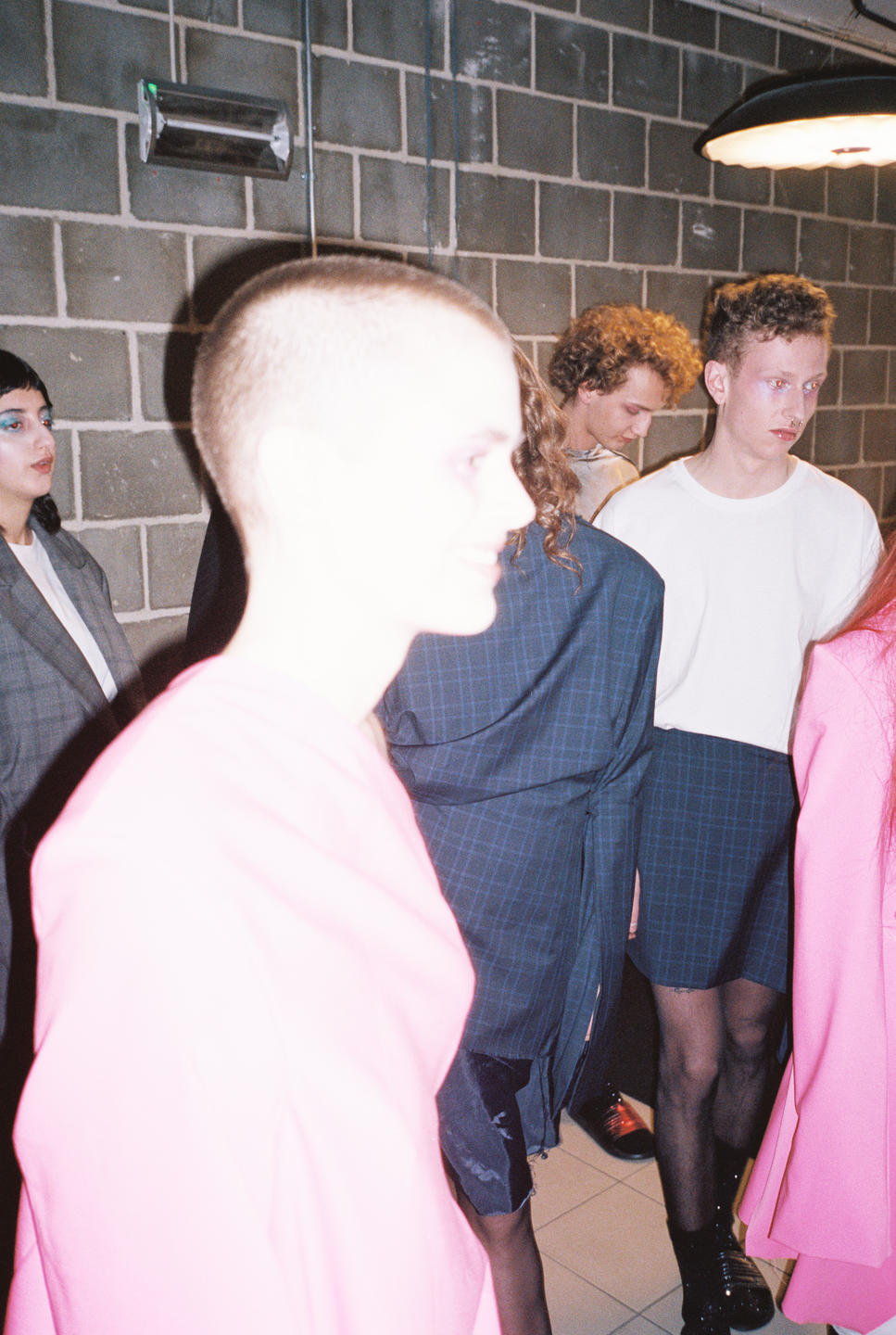
Do you think the masculine suit can be disrupted in the same way you have disrupted the female suit?
In fashion, it already is with the likes of Thom Browne, Yohji Yamamoto, Jean Paul Gaultier, and we can go on. But in the classic mainstream, I guess not so much. I’m sure it will over time, though, as views and values are changing through how we evolve in discussing equality and gender, for instance. I don’t really delve into menswear that much, because my initial interest lies within the female, but I take from the masculine and then disrupt it.
Do you feel like your creations would belong in a structured workplace like, let’s say, Wall Street?
Sure, why not? And on Alexandria Ocasio-Cortez.
It’s funny because your pinstripes are not pinstripes anymore, because of your work with folds and drapery.
When I first started working with tailoring, I dissected it by all means. For example, the SS14 collection where I wrote “pinstripe” as pinstripes on silk satin, or from SS16 “Into the Fold” where I totally deconstructed two pinstripe suit jackets, making an asymmetrical, unfinished, raw, draped tailored vest. I want to show you a “wedding dress” I made for the same collection where I worked a lot with the pinstripe and its uniformity and heritage, and through the pinstripe made a connection to the football shirt and its traditions of belongingness. I found it intriguing, the football jersey opposing the suit. Them both inheriting uniformity and class, just in very opposite social structures.
That’s so funny that you’re showing me a wedding dress, because the codes of dress for a woman’s wedding dress are so ingrown and outdated. It’s like the feminine opposite to the suit.
But that’s maybe the only female garment that has the same position as the suit? In regards to it being a garment that holds strong traditional values, and as soon as you see one you know what it means, you can easily position it in a certain context.
I want to say that your work doesn’t feel constricted, it’s very open and never really closed off.
The action of “falling off the body” has always been an important event for me whilst making, which relates back to drapery and a voluptuous and sensual feel of the fabric together with the body. I like the idea of continuity, and infinity, of something, evolving and changing, being in motion, forward.
Notifications